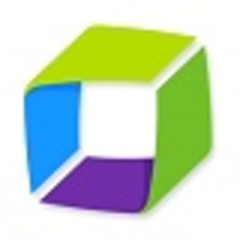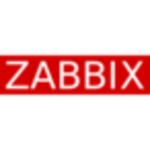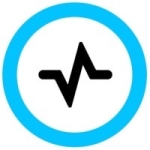What is our primary use case?
I joined Datacom about 15 months ago - the consulting company, systems integrator - and we're currently building a system for the Red Cross Blood Service. It's an organ register, it's got algorithms in it to match donors and recipients, and as part of that we're replacing an existing legacy system. It's going to be in the cloud, AWS, and we're building greenfields, completely from scratch on a .NET platform. Dynatrace is the primary application monitoring tool for the platform.
Currently, we are about six months away from finishing the development phase, and we're using Dynatrace as part of our build phase, to actually help detect design issues and bugs during the deployment phase.
How has it helped my organization?
The benefit we've seen so far is the ease of configuration, ease of set-up, just drop an agent in the machine and off it goes. That's been good.
Also, having a single point of availability of all your performance data has been a big benefit.
Another big benefit is to be able to track those individual transactions and being able to really pinpoint where your issues are, based on the individual activity. With the traditional monitoring tools, you generally just see infrastructure metrics, CPU, memory, disk; that's sort of outside, a black box of an application, and you can see how it affects your infrastructure. Whereas APM tools really crack open that box and make those other metrics almost irrelevant.
The ability to track that user, the real user monitoring, for me that's always the key, to unlock that. That tells you what your user is experiencing. Everything else is meaningless. For me, the number one measure of how your system is performing is what your user is experiencing on the front end. If they're having a good experience, the fact that maybe your infrastructure isn't performing that well is not really that relevant. Whereas before: "The CPU is going nuts." Well, our user is not impacted, I'm in the cloud, I don't really care. The system is behaving itself, the AI says, "Well, that's just normal." It just changes your perspective from looking at your raw infrastructure, to measuring performance on your user experience, just completely turns it around.
What is most valuable?
Problem detection. Obviously, during the building of a system that is new and it's in development, there are a lot of bugs. Being in the cloud it is very difficult, sometimes, to diagnose where the issues are. Dynatrace gives us that deep insight into errors.
It's very useful for performance issues as well. When you build a system generally, there is a lot of that technical debt. We're an Agile project, our developers are initially focused on business value, rather than building a technically perfect solution. We want to get that business buy-in, build a system and get that functionality going. While we're doing that, we're accumulating some technical debts, we haven't built it perfectly in terms of technical design; things like scalability, being able to handle loads, that kind of thing. As the system is maturing, we're starting to throw some load at it, and we start to see performance issues. Using that telemetry from Dynatrace, we are able to pinpoint what our performance issues are so we can tune the system.
So it's tuning and problem resolution.
The role of AI, when it comes to IT's ability to scale in the cloud and manage performance problems, is a feature of Dynatrace that I like the most. I've used some competing products, and the fact that it has that AI capability in it, for me, is really the primary, the number one feature, that ability to automatically do problem resolution.
What needs improvement?
The one feature that I was really pleased to see coming is that configuration management - that's scripted configuration management - which really fits into that whole DevOps idea of being able to do that.
I'd like to see the UI a bit more polished. For example, I saw a demo of the dashboards here at the Perform 2018 conference. There was a table of these widgets, but they're not sorted alphabetically and there's, like, 50 of them. So if you want to find your widgets, you're of scrolling up and down. So, small features: Being able to search for widgets, having things more categorized; just a bit more focused on the user experience.
Another example is, we have multiple tenants. If you have them up at the same time, you can't see in the UI which tenant you're in. It doesn't tell you.
So focus on the user experience. I can see where they're coming from in the Agile development process, where they delivering value, but they need to go for a bit of that gold-plating now and just polishing off the UI.
What do I think about the stability of the solution?
Stability is very good. We went straight into the brand new platform. You can still see the UI is a bit unpolished, but it's good to see that kind of iterative release and all those new features coming on a regular basis. You can see, hopefully, that some of the big customers like with SAP, that will definitely drive maturity while they migrate off their legacy platforms.
What do I think about the scalability of the solution?
For us, the scalability is perfect. Some of our challenges - especially with this specific solution we're building, it's not really load, it's a very low-utilization system - our challenges are accuracy, donor privacy, and availability. Those are our key concerns.
Being a consulting company, we're looking at introducing this as part of other solutions within the blood service organization, and other organizations as well. So, we work with some large organizations like government and other big companies. Scalability is important, and seeing some really big clients adopting it gives us a lot of confidence that it's not going to be an issue.
How are customer service and technical support?
We've had a few issues along the way and they've been very responsive. We have had some small defects with an agent and some of the functionality. One example would be, we were using a single pager, using Angular, and we upgraded our Angular from version 2 to version 5, the latest and greatest. Dynatrace had some issues with supporting the latest version. So they were quite responsive to some of the issues we had.
Which solution did I use previously and why did I switch?
I've used those traditional monitoring tools. I come from a development background. I have used a competing product that is in the same space as Dynatrace, and the biggest challenge I found was - me being a bit of a nerd, a DevOps guy - I could look at a chart, a performance chart, from previous systems when we were doing load testing. I could look at a chart and understand where the performance issues are and how the system is behaving, and the load. But when I engaged other people, even technical people, I would say, "Hey, just look at this chart." And they're just looking at some graph, it's meaningless to them. The way Dynatrace looks at things is to try and translate things into a business perspective, impacted users, root cause analysis, that's really the message. With traditional tools you'd have to take those metrics, translate them into business language. Dynatrace is giving you that capability.
How was the initial setup?
We're using Dynatrace Managed. Because of donor privacy concerns, the client wanted us to create our own on-premise, in our on private cloud, meaning a private tenant in a public cloud. We set up our own Dynatrace instance and completely managed by Dynatrace so we never touch it. We patched it due to some of those vulnerabilities, but other than that it's been really seamless for us.
What other advice do I have?
My role as solution architect is twofold. One is designing the actual system, but my background is DevOps and my main day-to-day role at the moment is very heavily DevOps-focused. I'm also involved on the practical side, putting in all the automation, that automation platform. To have a tool like Dynatrace, where I don't have to work out for hours how to configure and set up alerts and monitoring - especially in a solution that is not completed yet - it's not only a major time-saver, but I know going forward that it will be able to learn how the system operates. So we don't have to spend time doing that. Day one, we're getting all of that stuff for free, out-of-the-box.
I would rate it a nine out of 10. Not only is it a great product now, but I can just see from their vision and what they're trying to achieve, I'm really excited about the direction it's going. It's a great product.
First of all, if you don't do it, you're flying blind, so do it immediately.
The other thing I want to say is you need to make sure that your organization, from a maturity point of view, is mature enough to adopt it. So if you're going to put in a tool, and if it's just going to be another tool that's sitting there... To really get the benefit out of it, you need to be in that sort of Agile, lean, innovative mindset. Dynatrace enables that feedback, so you get that quick feedback from ops into development into business, and the benefit you get from DevOps is to be able to react quickly to that information. But your organization, your business, especially, needs to enable that rapid feedback. Your business needs to be set up to be able to use that information and share it.
Disclosure: My company does not have a business relationship with this vendor other than being a customer.















